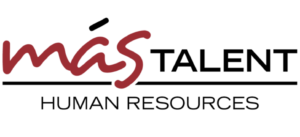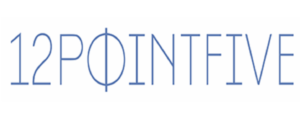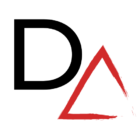You may have heard the expression “The cobbler’s kids have no shoes.” It describes the phenomenon of a skilled professional with an area of deep expertise that in this case they don’t apply to their own family. Cobblers get a bad rap in this example but it applies to lots of professionals. I’ve known doctors who neglect their health and accountants whose own books are a mess.
Consultants are often like this as well. We want clients to do as we say, not as we do. Something we would never overlook for a client gets pushed to the back burner in our own companies.

That’s why as I wrote our previous posts on supplier diversity, it prompted me to take stock of where DAI is in our supplier diversity strategy. In the past few weeks, I’ve talked about best practices for supplier diversity, implementing those best practices, and transform a supplier diversity program into a strategy.
The posts outline the steps and processes companies need to take to make their supplier diversity programs successful. The next question I asked myself is, do we take our own advice? Is the DAI supplier diversity strategy successful? Do we walk our talk?
I’m happy to say that we absolutely do. We partner with diverse suppliers as part of a strategy to give our clients the best in class solutions we are known for.

We’ve had the experience of working with large purchasing organizations to meet their supplier diversity goals and we’ve heard the myths that persist when it comes to supplier diversity, about the number and quality of the suppliers that are out there. At the same time, we have experienced the benefits of a diverse supply chain first hand because the strategic alliances DAI engages in provide value to us and our clients.

Highlighting DAI’s Strategic Alliances
We want to take this opportunity to highlight our strategic alliances with other diverse suppliers: Más Talent, Gwendolyn Stanberry Evans, 12PointFive, and Canon Design Group and how we’ve worked together to make these partnerships successful.
There are a few common characteristics in a successful partnership – shared goals, rational and equitable incentives, and aligned values. In each of our client and vendor relationships we start from these elements and grow together.

Más Talent (WBE, MBE) – HR solutions customized to meet your business needs
Cyndi Ramírez Ryan is the CEO of Más Talent and is an integral member of our team. No matter the size of your company, the best supplier relationships are partnerships. They go beyond just transactions to where the organizations are creating and pursuing strategies together. What drove the partnership initially was that DAI and Más Talent have complementary services. Cyndi’s team began with identifying candidates for the DAI team during a challenging hiring crunch. As we progressed together and realized the breadth that Más Talent has to offer, we recognized the need to leverage Cyndi and her team’s expertise in human capital management, which adds value to DAI services.

Gwendolyn Stanberry Evans (MBE) – Expertise on Tax Policy to Guide Financial Strategy
Gwendolyn is a professional with a unique combination of tax policy, management, and leadership skills. She has multistate tax experience which is critical in providing finance solutions for corporate clients. When DAI is advising our clients on financial transformation, we look at what companies need to budget and forecast in order to make strategic financial decisions. Having a sound tax strategy is a key component, especially for large companies with complex financial structures. Gwen provides the DAI team with the information and insights we need to advise our clients and provides a critical piece of the financial transformation puzzle.

Canon Design Group (MBE) – Brand management is an art of creating and sustaining the brand.
Canon Design Group provides the best creative solutions possible, fosters innovation and utilizes the latest technology, while continually expanding into new markets. They are a company of accomplished artists and producers who understand story, process, and relationships.
We met Canon Design Group through a mutual client and they have since worked with DAI on our brand transformation. As we’ve grown our brand has evolved and Canon Design Group is an extension of our team making sure that the story our brand tells is consistent and compelling.

12PointFive (WBE)-Find new opportunities and Maximize Business Development Efforts
12PointFive is a business development consultancy that helps diverse businesses leverage certification. Liz works with the DAI team to keep their goals on track and provides tools and insights to navigate the supplier diversity space. While we work with large companies to advance their supplier diversity programs, Liz helps ensure that we’re leveraging those programs for DAI.
We met Liz through a WBCS networking event around the time we started working with their Board to provide a report on how best to leverage WBCS resources for their stakeholders. Liz is based in the DC area and without the network that WBENC and their affiliates provide, we likely wouldn’t have met.

Fitting into the DAI supplier diversity strategy
It is not coincidental that our strategic alliances align with our core services that we offer to clients. When we set out to find diverse suppliers, we develop relationships with the best people to help our clients meet their goals. To identify where the opportunities are for new vendors and partners, we start with the end in mind. We ask:
- What is our objective?
- What will provide the most value for our team and/or our clients?
- Is a partnership mutually beneficial?
Often in both big companies and small companies, procurement decisions are based on personal preferences, convenience, or ease of googling. In order to find the best suppliers, who became partners with our team, we had to look outside of who we knew already. As a certified WBE, DAI had the resources to find other WBE firms but it was important that we didn’t limit ourselves to companies that looked like ours. As consultants and practitioners of diversity, equity and inclusion, we know that the best solutions come from diverse teams so we grew ours with these partnerships.

You don’t have to do it alone
The companies we work with are not the only pillars in our supplier diversity strategy. We met our strategic partners through the membership organizations we support and work with. This advice probably sounds familiar as we recommend that our corporate clients take full advantage of the membership benefits of supplier diversity organizations, too. We identify partners through WBC Southwest, WBEC West, and the LA Chamber of Commerce. We also work with companies that we meet through our clients which provides a shared understanding and the opportunity to provide shared solutions.
We not only attend the events that these organizations offer but we get our team members involved. Since we have multiple locations, we encourage team members in those locations to get involved with their local affiliates. We offer pro bono services to the organizations, providing content and capacity development for our fellow suppliers. For example, we will be offering a business continuity and resilience webinar for WBEC-West WBEs in a few weeks. By building up these relationships, we have trusted organizational partners we can call on when we need to source and vet new strategic alliances.

Relationships>>Then paperwork
Just as with romantic relationships, meeting people is simple, finding a true partnership is complex. And, as with a romantic relationship, it’s good to get to know someone before diving into a partnership. In many workshops on strategic alliances, panelists dive right into what a partnership agreement looks like. They focus on the pitfalls of a loose agreement and a loosely governed arrangement.
But with most partnerships, the paperwork is not where the relationship fails. It’s with the trust and understanding of the two partners.
For DAI’s partnerships, we start with getting to know the potential partner and the relationship evolves from there. Before creating something together, pursuing a client jointly, or offering shared services, we start with something more low stakes to make sure there’s a fit.
For example, we may do a webinar together or a joint presentation. We may subcontract before bringing another partner in front of a client. And if a partner is going to represent the DAI brand, we need to ensure that our brands align in values and communication styles. By starting slow and building the relationship we are able to identify partners that can bring value and work well with us.
This is often a strategy with large companies looking to do business with diverse suppliers too. I often hear from business owners who complain about having to subcontract to primes or who are getting smaller pieces of work. In many cases, this is how large companies mitigate the risk of doing business with smaller companies and how they vet potential suppliers.
The same goes for capacity development and mentorship programs from large companies. It gives larger organizations an opportunity to “date” or vet potential suppliers before pursuing a partnership.
In whatever form this getting-to-know-you process takes, it is also an opportunity to build trust. Without trust in the relationship, all the paperwork in the world will not make for a healthy partnership.

It’s still hard
While DAI is walking the talk in terms of supplier diversity, we recognize that it’s still hard. We are still tweaking and revising our processes so we can do better forecasting and budgeting. When we go to conferences like the WBENC Conference in Atlanta we are preparing so we know what kind of partnerships we are looking for in the future. We will build relationships with our existing partners who will be there and make new relationships that will grow with us and our clients. And we are constantly reviewing our spend and tracking mechanisms to make sure we are telling our story in a way that builds new and existing partner relationships.
It’s a considerable amount of work to do it right. The biggest positive outcomes came for us when we shifted our mindset. Rather than thinking about building strategic alliances as ancillary to the benefits we bring our clients, we view it as a critical value add. The fact that those partners are certified diverse businesses meets a need that our clients have for increasing spend. It also meets the need for DAI to align our processes and policies with our values.

The Bottom Line
The bottom line is that just like the big corporations, DAI works with diverse suppliers because it’s beneficial to our bottom line. We are able to grow our service offerings, expand our capacity and meet the needs of bigger clients. We also provide a value add for clients that are looking for diverse suppliers in their own supply chains.
In this case, we are proud to say not just, “Do as we say, but also do as we do!”

